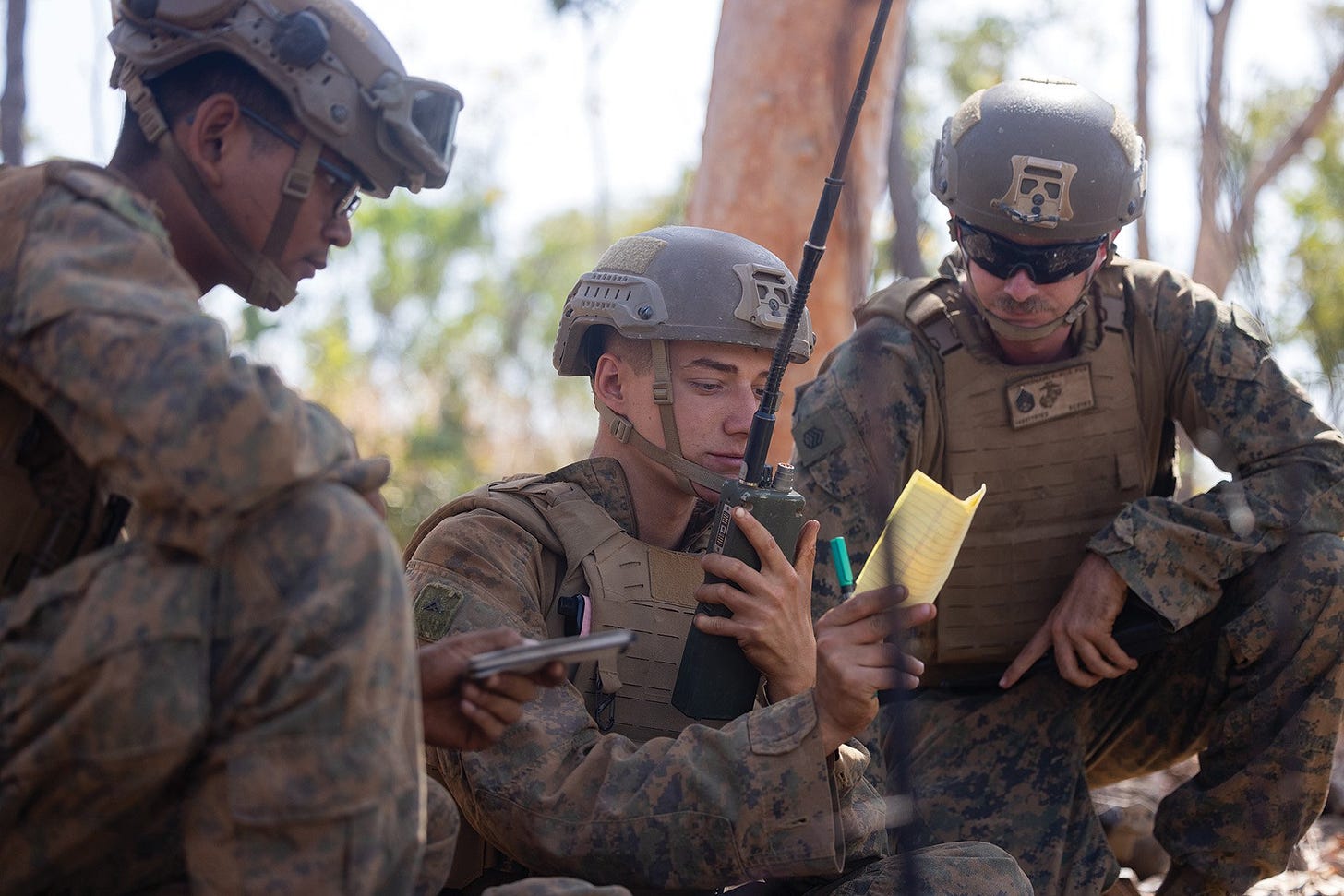Marine Corps at 250
Ideas for the Next Fight
Today, we wish all Marines a happy 250th birthday! War Quants was founded by a group of Marines, so while we are fans of all branches, we make no apology for letting our service pride shine today.
The Marine Corps has a long and proud history. Every Marine knows names like Smedley Butler, Dan Daly, and Opha Mae Johnson — and knows the significance of battles like Chapultapec, Belleau Wood, and Iwo Jima.
In recent years, the Marine Corps has sought to build on this legacy through a campaign of modernization aimed at preparing for the next fight. These changes have sparked lively debate, and much work remains to be done.
To mark the Marine Corps’ 250th birthday, we’re highlighting how the War Quants team has contributed its analytical and writing skills to the ongoing conversation about modernization and the Corps’ future.
Each year, the U.S. Naval Institute hosts the Marine Corps Essay Contest, inviting Marines and civilians alike to challenge assumptions and advance the profession. This year, the War Quants team was well represented—earning second and third place.
Below are summaries of both essays, along with links to the full pieces.
🥈 Second Place — “Give the King of Battle Wings”
By Sean Harper

In “Give the King of Battle Wings,” Sean Harper makes the case for giving Marine artillerymen new reach and relevance through an Organic Precision Fires–Heavy (OPF-H) capability. He argues that 08XX Marines—the “King of Battle”—are uniquely suited to employ long-range, one-way attack drones that can deliver precision mass at scale.
By merging the traditions of artillery with emerging drone warfare, Harper envisions a future where Marine fires are more mobile, distributed, and lethal. The essay challenges the Corps to evolve its fires community for the era of autonomous warfare—keeping the King of Battle on the throne.
👉 Read the full essay at U.S. Naval Institute
🥉 Third Place — “First to What Kind of Fight?”
By Aaron Barlow, Patrick Moecher, and Caleb Kadrmas

The Marine Corps can no longer afford both a persistent 3.0 ARG/MEU presence and a fully realized Stand-In Force (SIF) posture. Strategy demands choices. In “First to What Kind of Fight?” the authors argue that the current demands for amphibious shipping to support both the legacy MEU and the modern SIF are unattainable within realistic budgets.
Their solution: emphasize littoral mobility for the SIF and integrate that concept alongside traditional amphibious warfare shipping into a bi-modal naval fleet design that distinguishes between global response forces and theater-focused stand-in forces. The essay calls for a coherent amphibious strategy aligned with the Navy’s Force Design 2045 initiative—one that ensures the Corps remains first to fight in the right kind of fight.
👉 Read the full essay at U.S. Naval Institute
As the Marine Corps celebrates 250 years of adapting to change, we’re proud to contribute to its next chapter—one where analysis and imagination combine to make the Corps stronger for the fights ahead.
The ideas shared in these essays reflect the kind of thinking we value most: quantitative insight, analytical rigor, and intellectual humility. Precisely the type of contributions War Quants strives for.
The views and opinions expressed on War Quants are those of the authors and do not necessarily reflect the official policy or position of the United States Government, the Department of Defense, or any other agency or organization.

